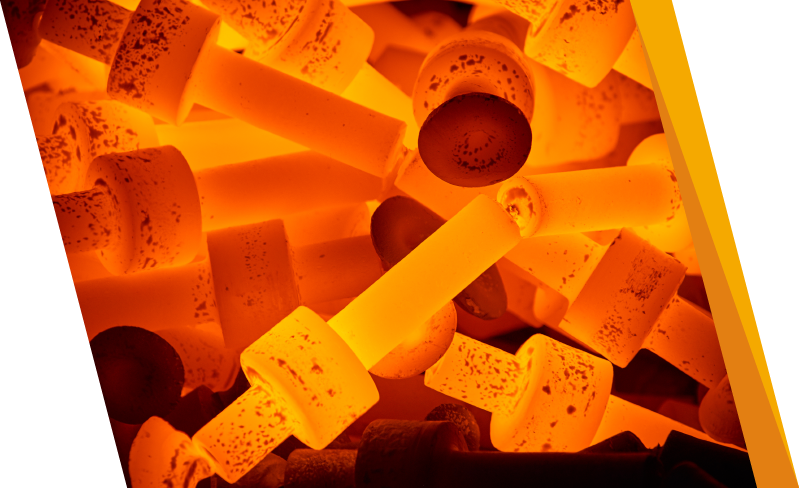Products
We are manufacturing complex forging parts, such as steering parts, tie rod end, ball joint, rack end and stabilizer link. Especially forging with tight thickness tolerances, and ensure provides a wide range of in-house engineering capabilities. Therefore, save machining costs and expenses. Steering parts has been used all over the world with our good high quality forging products.
Technology & Quality
The 1000t hot forging production line conducts the production through the processes of material sawing, heating, forging and edge trimming in an integrated manner and can produce the forged products of 100mm in thickness and weight within 10kgs. As its name suggests, the hot forging is a process technology where the material must be first heated and then formed. Such kind of process technology is usually applied on the forged products having a very big appearance deformation amount.
Because every customer has different requirements, we must keep close communication with the customer during the product development period to ensure that the forged products reach the customer’s requirements. Through the close combination of the computer aided design and computerized mould design research and development and the company’s specialized mould making group, a comprehensive and consistent monitoring is made from the design development to mould manufacturing, electric discharge machining, line cutting machine and other processes, thus, lowering the cost to fully improve the research, development, design and mould manufacturing capabilities. We can calculate and design the final dimensions of forged products very accurately to shorten the mould testing time and cost and ensure each process of forged products reach the requirements, thus to further improve the quality of the mass production stage.
Annealing
The annealing treatment is a common stress-reducing technique in the metal processing field. The method is to effectively reduce the internal stress of material by putting the material under certain deferred control of temperature variance and time.
Normalization
The treatment of leaving the steel still in the air to cool down naturally after it is heated to above 900℃ is known as the normalization treatment. The main purpose of normalization is to eliminate the aforementioned unfavorable textures and further improve the mechanical properties of steel material.

